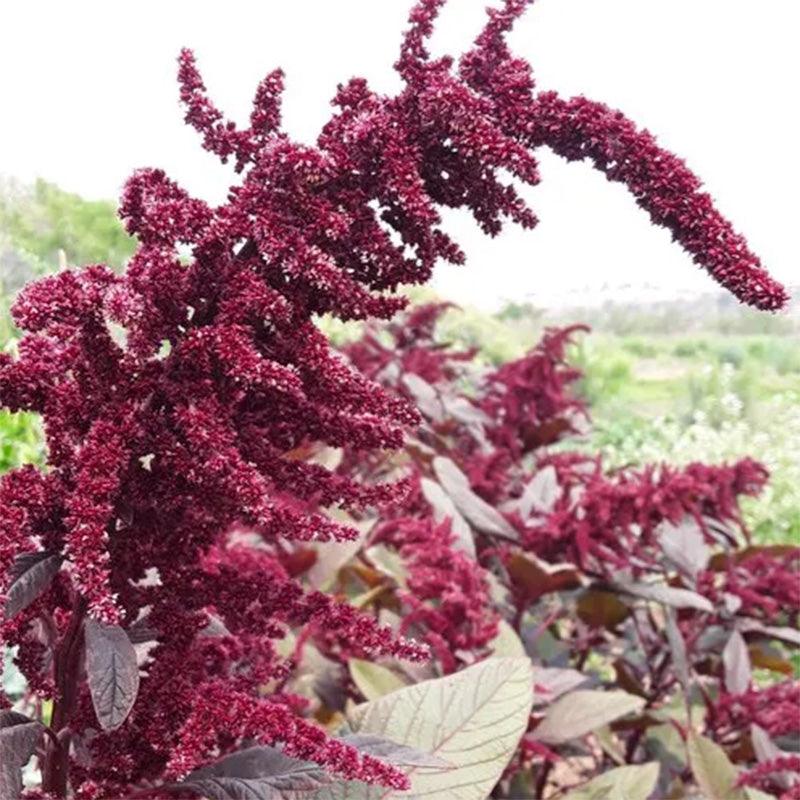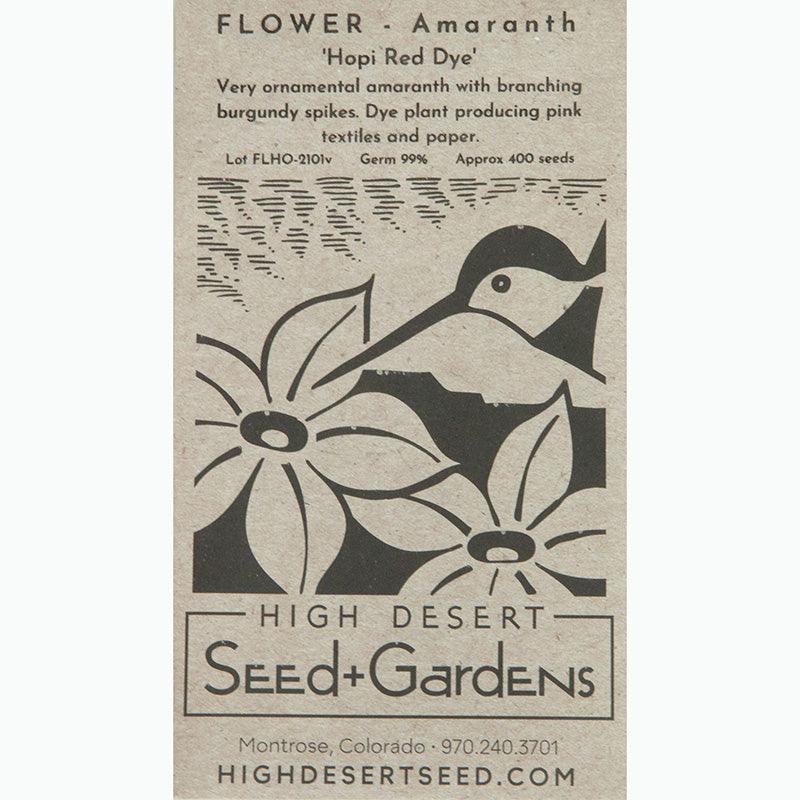Item Number: SNV9004
Hopi Red Dye Amaranth Flower Seeds
Seeds of Hopi Legacy
Growing Hopi Red Dye Amaranth is a rewarding and vibrant addition to any garden, offering not only stunning ornamental value but also potential uses in natural dye production. Hopi Red Dye Amaranth, scientifically known as Amaranthus cruentus, belongs to the amaranth family. It is native to North America and has been cultivated for centuries by the Hopi tribe for its ceremonial significance and dye-producing capabilities. The Hopi people have long valued this plant for its role in traditional ceremonies and for creating red dye. Its deep cultural roots make growing Hopi Red Dye Amaranth a meaningful connection to Native American heritage.
Cultivation Guide:
- Climate and Soil: Hopi Red Dye Amaranth thrives in warm climates, making it well-suited for zones with a longer growing season. Plant in well-draining soil with a slightly acidic to neutral pH.
- Planting: Sow seeds directly into the garden bed after the last frost date, as Hopi Red Dye Amaranth is sensitive to cold temperatures. Space the seeds about 12 to 18 inches apart, as these plants can grow large and bushy.
- Watering: Provide consistent moisture, especially during dry periods, but ensure the soil is not waterlogged. Mulching can help retain soil moisture and suppress weeds.
- Sunlight: Hopi Red Dye Amaranth thrives in full sun, receiving at least 6 to 8 hours of direct sunlight daily. Fertilization: Use a balanced fertilizer during the growing season to support healthy growth and vibrant foliage.
Care and Maintenance:
- Pruning: Pinch back the tips of the plants when they are about 12 inches tall to encourage bushier growth and prevent legginess. Support: As the plants grow, they may benefit from staking or support to prevent them from bending under their weight.
- Harvesting: Harvest the vibrant red flower heads before they go to seed for optimal dye production. Hang the harvested stems upside down in a dry, well-ventilated area to dry.
Uses and Dye Production:
- Natural Dye: The primary allure of Hopi Red Dye Amaranth lies in its ability to yield a rich red dye. The dried flowers can be used to produce natural dyes for textiles, offering a sustainable and culturally significant alternative to synthetic dyes.
- Ornamental Value: Beyond its practical uses, Hopi Red Dye Amaranth is a striking ornamental plant. The tall, deep-red flower spikes add a dramatic flair to gardens and landscapes, making it a favorite among gardeners seeking both beauty and cultural depth.
Cultivating Hopi Red Dye Amaranth goes beyond traditional gardening; it's a celebration of cultural heritage and a connection to the rich history of the Hopi people. With proper care and attention, this plant not only graces your garden with its vibrant presence but also opens the door to sustainable, natural dye production—a craft deeply intertwined with Native American traditions. Embrace the journey of growing Hopi Red Dye Amaranth, and let your garden flourish with history and beauty.
Check Your Zone Compatibility:
Compatible with your zone.
Growing Zone for

Our Guarantee To You
Since 1976, we've served our customers at every stage of growing. Please contact us at any time. We are happy to support and assist you.
Shipping Information
Shipping Information
Shipping Weight: 0.02 lb
Dimensions: 4.0"L x 3.0"W x 0.5"H
Features
Features
- Heirloom
- Open-Pollinated
- Useful for Ornamental
Characteristics
Characteristics
Planting & Care
Planting & Care
Soil & Water: Amaranth likes loam and silty loam soil. It is very drought tolerant so water only when dry.
Planting & Growing: Direct seed after soil has begun to warm in spring. The seed is very fine so you can mix it with a carrier like sand or dry coffee grounds. Scatter the seed and rake it in lightly.
Harvesting & Storage: For greens, harvest the entire plant before flowers appear. For seeds, harvest after flowers have turned to seed, by cutting the stalk and letting it cure for a few days in a sunny location. Bring it in at night to avoid moisture. Once dried, shake into a paper bag and filter with a sieve.
Useful Information
Useful Information
Guarantee
Guarantee

Peaceful Valley Farm & Garden Supply brand vegetable seeds are guaranteed to germinate. Once the seeds have sprouted, please understand that Peaceful Valley cannot be held responsible for the many uncontrollable growing and climatic conditions that must be met to ensure the success of your crop(s).
Share




